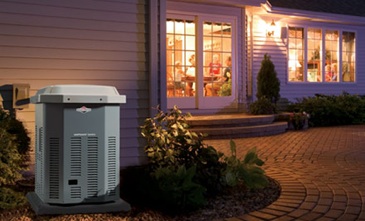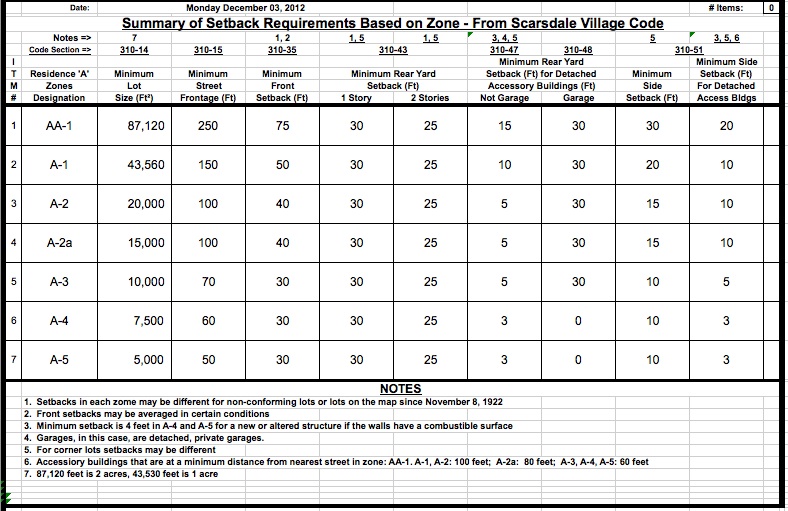Scarsdale Planning Board Recommends Easing Noise and Setback Requirements for Home Generators
- Saturday, 01 December 2012 10:32
- Last Updated: Thursday, 06 December 2012 08:09
- Published: Saturday, 01 December 2012 10:32
- Hits: 6081
 The Scarsdale Village Planning Board's examination of Scarsdale Village Zoning Code Chapter 310-7 – "Permanent Emergency Generators" drew a large crowd to its November 28th meeting. With many Scarsdale residents out of power for as many as 11 days in the aftermath of Hurricane Sandy, this issue has become one of central importance here.
The Scarsdale Village Planning Board's examination of Scarsdale Village Zoning Code Chapter 310-7 – "Permanent Emergency Generators" drew a large crowd to its November 28th meeting. With many Scarsdale residents out of power for as many as 11 days in the aftermath of Hurricane Sandy, this issue has become one of central importance here.
This Board revisited several specific issues: noise, placement, fuel source, and certification. Proposed amendments to the law had raised the decibel amount to 65 and allowed for side yard in addition to rear yard installation, but kept the 20 feet setback. Planning Board Chair Jane Veron recognized that these changes were likely insufficient, stating that the "severity and frequency of these storms have changed our assumptions about what is necessary to protect ourselves."
The debate over the code focused on noise during "exercise time," a once weekly maintenance run-through that takes about fifteen to twenty minutes. Many residents voiced their opinions to the Board.
Larry Bell, representing the West Quaker Ridge Association Generator Committee which submitted an extensive twelve-page report to the Board, summarized the Committees' recommendations, which include a process for expedited approval for rear, side and front yard above-ground, outside installations without regard to setback of generators that meet the Village's noise requirements. For front yard installations, residents would need to demonstrate impracticality or hardship. The report also called for an elimination of the five-year recertification requirement. You can download a summary of their report by clicking here.
Residents implored the Board to remember the big picture and not get bogged down in details. Russ Kopp cautioned that the Board was "closing the barn door and leaving the window wide open." Board members must remember, he urged, that if the rules on generators remain too restrictive, residents will install temporary generators, which will be louder and more dangerous than permanent generators. George Sanderson pointed out that in the aftermath of Sandy, the newspaper contained two columns of calls to the fire department from people who had improperly hooked up temporary generators. The Board also questioned expert Lewis Baldessarre from Power Performance who distributes generators. He advocated for a focus on safety rather than noise. He reminded the Board that many individuals need generators for medical reasons and to prevent pipes freezing, and of the dangers of temporary generators.
In addition to safety concerns, Philip Sanchez noted that the lower the decibel requirement, and thus the more expensive the generator, the higher the likelihood of generators becoming cost prohibitive for some families.
Several owners of smaller plots of land reminded the Board that restrictive regulations particularly impact their ability to install emergency permanent generators legally. Ms. Veron stated that the Board held over this discussion primarily because it was concerned that the law did not help small lots and it wanted to ensure that all residents, no matter lot size, can apply for a generator permit.
In response to resident comments imploring the Board to act quickly on this matter, Ms. Veron iterated that "our goal is to move as  rapidly as possible."
rapidly as possible."
Ultimately, the Board elected to recommend a noise limit of 70 decibels along with an elimination of the recertification requirement, stating that residents have the option to file a noise grievance if generators become too loud over time. It will advocate for noise to be measured according to manufacturers' specifications, as several residents suggested. In that case, decibel amount is measured at 23 feet away from the generator. Additionally, the Board will recommend replacing the 20-foot setback scale with the accessory setback scale for buildings (a graduated scale that takes lot size into account --see chart below). Due to expense, odor, and logistical concerns, the Board did not recommend adding diesel to the list of acceptable fuel sources. Finally, though several residents recommended allowing for front-yard installation, the Board ultimately decided that the current law, which allows residents to apply for a variance if they will experience "undue hardship" without front-yard installation, is sufficient.
Scarsdale Mayor Miriam Levitt-Flisser announced the Village's plan to pass this law as quickly as possible. On December 12, the Village Board Law Committee will meet to review the Planning Board's recommendations. At a public hearing the first week in January, the Village's plan is to enact the law unless residents voice significant opposition. Accordingly, the Village may pass the law as early as the first week in January.

See below for instructions on determine the zone of your house.
1. Navigate your Internet browser to www.scarsdale.com, the Scarsdale Village website;
2. About half way down the home page is the section titled "Interactive";
3. In the Interactive box, click the link to "Online Property Inquiry";
4. The next screen contains a pull down box containing street names in
the Village database. Find the street name about being inquired
about and click on that street name;
5. The next screen contains a pull down box containing numbered street
addresses for that street and the user should click on the specific address being inquired about;
6. The next screen will contain the information contained in the
Village database about this property, including what zone it is
in, assessment information, tax information and permit information back to when the house was originally built.
(This chart and instructions were compiled and supplied to Scarsdale10583 by Bill Kay)
Contributor Lindsay Dembner lives in Scarsdale. She is an English major turned lawyer currently pursuing employment in higher education and education nonprofits.














